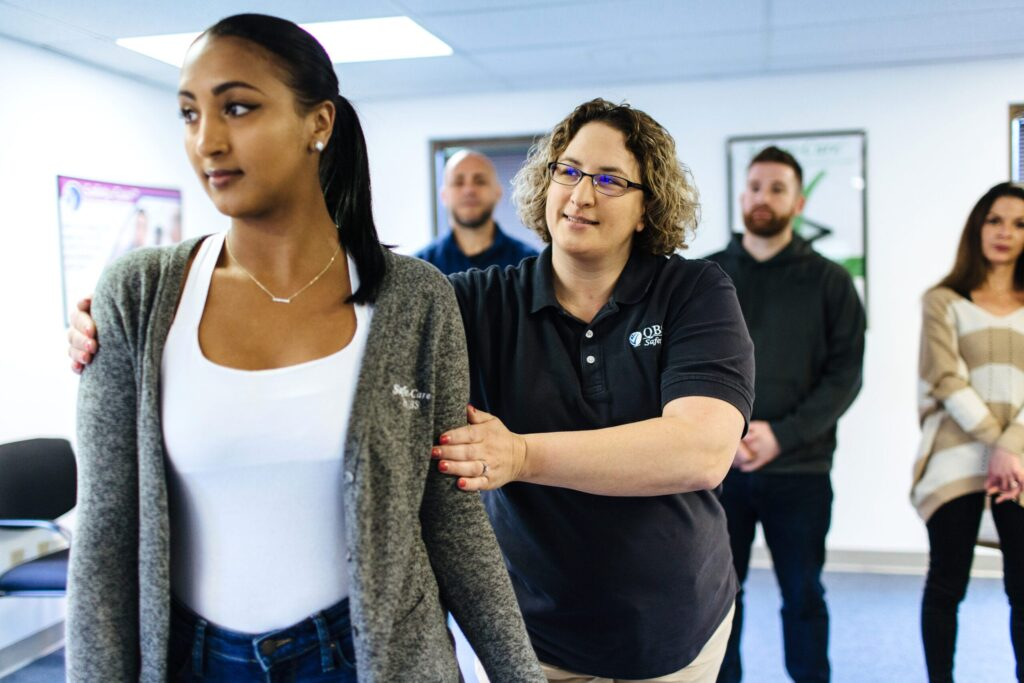Maryland Senate Bill 705 – Student Restraint Requirements
In July of 2022, Senate Bill 705 went into effect. This legislation established new requirements for the use of restraint and seclusion in schools in the state of Maryland. Below is a summary of the effects of SB 705 and discussion on how Safety-Care can be used to meet the needs of staff and students.

.png?width=88&height=95&name=Group%20137%20(5).png)


How to Implement Safety-Care?
1. Register for a Safety-Care Trainer class or call us to request a closed session for your organization. We regularly conduct classes in all 50 states and Canada.
2. Complete your class to become a certified Safety-Care Trainer for your organization. We bring you to fluency using an errorless teaching methodology.
3. You train and certify your staff in Safety-Care’s effective techniques.
4. Our Master Trainers are available by phone, email, or video to help your organization with any questions or concerns while using or implementing Safety-Care.

Legal Requirements
|
Summary: Effective: July 1, 2022 Last Updated: December, 2024 In July of 2022, Senate Bill 705 went into effect. This legislation established new requirements for the use of restraint and seclusion in schools in the state of Maryland. Below is a summary of the effects of SB 705 and discussion on how Safety-Care can be used to meet the needs of staff and students. How Safety-Care aligns: Numerous school districts throughout the United States and Canada rely upon QBS and our Safety-Care training to provide their staff members with the training they need to help maintain a safe and healthy learning environment. Safety-Care provides a comprehensive, supportive approach to incident prevention, de-escalation, and management. District staff will learn practical strategies for helping students that use evidence-based practices consistent with PBIS (Positive Behavior Interventions and Supports) and ABA (Applied Behavior Analysis). |
|
With the adoption of Senate Bill 705, Maryland schools placed extensive limitations on the use of restraint and seclusion. Physical restraints are (B) A public agency may not use seclusion as a behavioral health intervention for a student. (1) physical restraint is necessary to protect the student or another individual from imminent serious physical harm; and |
|
(A)(1) On or before December 1 each year, Each public agency and nonpublic school shall submit to the Department a report for the prior school year on: (I) The number of physical restraint incidents, disaggregated by the student’s jurisdiction, disability, race, gender, age, and type of placement; |
|
(B) On or before December 1 each year, each public agency and nonpublic school shall submit to the department a report on steps taken to encourage positive behavioral interventions, including: (1) The professional development provided to designated school personnel related to positive behavioral interventions, strategies, and supports and trauma-informed interventions for the prior school year; |
|
(B) Before adopting the training requirements under subsection (A) of this section, the State Superintendent shall identify any gaps in behavioral interventions, strategies, and supports. (C) The training requirements adopted under subsection (A) of this section shall include positive behavioral interventions, strategies, and supports that: (1) Are evidence-based; (D)(1) The training requirements adopted under subsection (A) of this section shall be the basis of a program of professional Senate Bill 705 development that the State Superintendent shall share with school employees from public agencies and nonpublic schools. (2) The State Superintendent shall issue guidance on best practices in implementing positive behavior intervention plans that are the basis for the professional development program. How Safety-Care aligns: Safety-Care training stems from ABA and PBIS and is regularly updated based upon the most current research. Additionally, the training is trauma-informed and designed for all staff to be trained on the same system. |
Why Safety-Care?
Benefits & Differentiators
In addition to Safety-Care being highly cost-effective, you get:

Skills to effectively prevent, minimize, & manage behavioral challenges with dignity, safety, & the possibility of change

Decreases in staff and patient injuries and reduction in restraint & seclusion time

Instructional procedures based on decades of evidence-based research & compatible with ABA, PBIS & reinforcement-based environments

Customizable program for your setting, staff & clientele, with a strong focus on preventative via non-intrusive, replacement behaviors

Extremely rigorous standards grounded in errorless teaching methodology

Small, intimate class sizes backed by unlimited support & resources
How Is Safety-Care So Effective?
A Genuine Focus on Implementing & Managing Positive Behavioral Skills
Proactive, environmental management recommendations
Understanding of evocative effects of staff behavior
In-depth analysis of antecedents and proactive antecedent interventions
Evidence-based reinforcement procedures
Required competency in de-escalation skills
Humane, non-invasive touch and QBS Check™ strategies
Evidence-based teaching procedures
Applicable to a wide array of settings, conditions & challenging behavior





